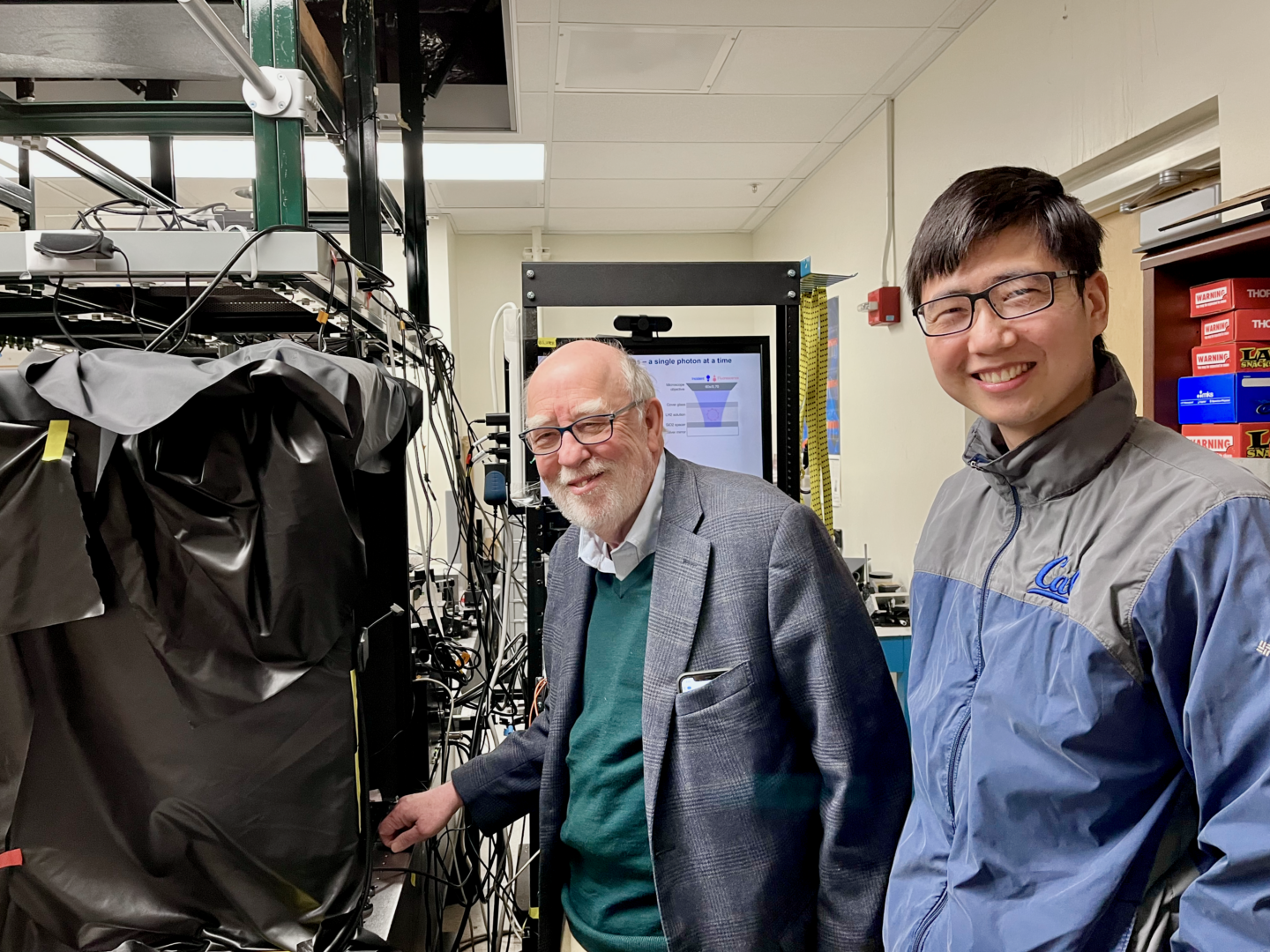A new study published today in Nature confirms for the first time that a single photon–the smallest quantity of light possible–can initiate the first step of photosynthesis, one of nature’s essential processes. The study, conducted by an interdisciplinary team led by Molecular Biophysics and Integrated Bioimaging (MBIB) senior faculty scientist Graham Fleming and Energy Sciences Area senior faculty scientist Birgitta Whaley, solidifies our current understanding of photosynthesis and will help answer questions about how life works on the smallest of scales, where quantum physics and biology meet.
Scientists have previously built an understanding of photosynthesis “in bulk”—that is, they know the inputs and outputs of the reaction, but not necessarily what is occurring on the minute scale of individual photons. And although prior experiments had explored what happens after a photon is absorbed during photosynthesis, key details about the first step of the reaction remained unknown. Based on how efficient photosynthesis is at converting sunlight into energy-rich molecules, scientists have long believed that a single photon was all it took to initiate the reaction. But it was an undemonstrated assumption. Understanding each individual component of these fundamental living systems could help create more efficient artificial systems, and prove instrumental in applications like generating renewable fuels.
Designing an experiment that would allow for observation of individual photons meant bringing together a unique team of theorists and experimentalists who combined cutting-edge tools from quantum optics and biology. Using photosynthetic purple bacteria as a model system and advanced technologies, including a photon source that generates a single pair of photons and highly sensitive detectors, the researchers were able to record observations that could only be attributed to single-photon absorption, confirming that the first step in photosynthesis reaction can indeed be initiated by a single photon.
This research opens the door for further exploration of energy transfer in photosynthetic complexes at incredibly small temporal and spatial scales, and deepens our understanding of the fundamental processes that sustain life on earth.
Other Berkeley Lab authors on the study include first author and affiliate postdoctoral researcher Quanwei Li and graduate student researcher Kaydren Orcutt.




